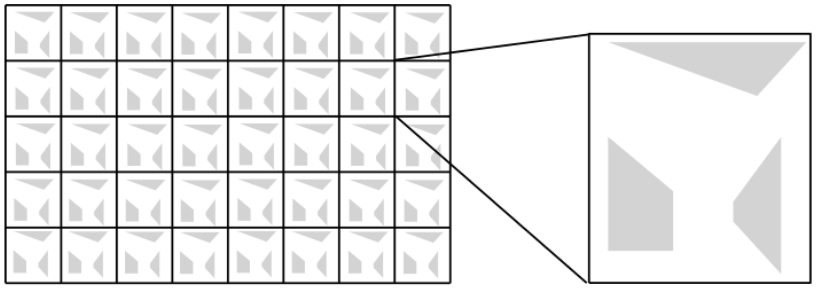Upscaling, analysis, and iterative numerical solution schemes for thermo-poroelasticity, 2019
Mats Kirkesæther Brun
Main content
Advisors: Florin Adrian Radu, Jan Martin Nordbotten and Inga Berre
Short description of project:
The main objectives of this research project is to provide part of the mathematical models and simulation technology required to assess large-scale deployment of thermomechanical subsurface energy storage in the context of intermittent renewable energy. Within this overarching framework, two main topics are discussed in this dissertation: Thermo-poroelasticity, i.e., the coupling of geomechanics, flow, and heat within a porous material, and phase field brittle fracture propagation, i.e., the temporal and spatial tracking of brittle fracture evolution by creating a diffusive zone around fracture surfaces through an auxiliary variable known as a phase field. These subjects are highly relevant for e.g., applications involving injection of heated fluids at high pressures into the subsurface, where the increased pressure may cause a fracturing of the rock matrix, in addition to the induced temperature gradient affecting the poroelastic properties of the surrounding medium.
The part of this dissertation focused on thermo-poroelasticity can again be separated into three parts; (1) modeling, (2) analysis and (3) numerical implementation. In part (1), formal upscaling techniques (i.e., homogenization) are employed in order to derive the constitutive thermo-poroelastic equations from the known equations governing the physical processes at the pore-scale. Homogenization is a well-known and trusted technique, which is applicable in situations where the physical processes in question can be viewed from several scales, and where there is some uniformity or periodicity on the smaller scale. Within the context of porous media, the two relevant scales are the pore-scale and the macro-scale. Viewed from the pore scale, a porous medium consists of solid grains (obeying the laws of solid mechanics), and a fluid which is saturating the space in between the grains (obeying the laws of fluid mechanics), where the two processes are coupled at the mutual interface (i.e., at the grain surfaces). At the macroscale, however, the porous medium is considered as a homogenous material obeying its own set of physical laws, but which is still somehow implicitly dependent on (or rather, the culmination of) the processes which are taking place at the pore-scale. Assuming some uniformity in the distribution of grains (formally, periodicity), the technique of homogenization allows for deriving the macro-scale model equations from the microscale model equations.
Part (2) is concerned with analyzing the thermo-poroelastic system derived in part (1). The existence and uniqueness of a weak solution to this model problem is established in the fully mixed formulation, under some natural assumptions on the regularity of the source and initial data, as well as imposing some constraints on the effective coefficients. Since the upscaled thermo-poroelastic system is a nonlinear one, this analysis is done in two steps: First, a linearized system is analyzed using a standard Galerkin technique together with the weak compactness properties of the relevant function spaces. Finally, the previously analyzed linearized system is used to design an iterative scheme in order to approximate the original nonlinear system. By employing a contraction argument, the convergence of this iterative scheme is proved, which implies the existence and uniqueness of a weak solution to the full nonlinear problem.
Part (3) covers the numerical analysis and implementation of the thermo-poroelastic system derived in part (1). Here, six different iterative algorithms are proposed, all based on the linearization technique employed in part (2) when analyzing the full nonlinear system, as well as the stabilized splitting scheme known informally as the ‘𝐿-scheme’. These six algorithms involve different combinations of coupling / decoupling of the three subproblems involved (flow, mechanics and heat), i.e., at each iteration either a linearized system is solved monolithically, two subproblems are solved together decoupled from the third, or all three subproblems are decoupled. As such, these six algorithms exhaust all possibilities of coupling / decoupling of the three subproblems. The convergence of all six algorithms are proved using a contraction argument, similar to the one employed in part (2), except that only the fully discrete formulation is considered. Several numerical tests validate the robustness and efficiency of the algorithms. Furthermore, the performance of all six algorithms are compared with respect to a wide range of different physical regimes (i.e., with respect to various coupling strengths between the three subproblems).
Finally, the last part of this dissertation concerns brittle fracture propagation in a quasi-static elastic medium, where the fracture evolution is tracked by a phase field variable. In particular, the numerical approximation of such models. Phase field brittle fracture problems are notoriously difficult to solve, and currently no universally accepted method exists. Hence, this work involves designing a novel iterative algorithm for brittle fracture phase field models, analyzing its convergence, and testing it in detail with several numerical benchmark problems. The proposed algorithm is based on a linearization as well as stabilization of the model, where the two subproblems (phase field and mechanics) are solved separately at each iteration, while sharing updated solution information. Under the natural conditions that the mechanical elastic energy remains bounded, and that the diffusive zone around crack surfaces must be sufficiently thick, monotonic convergence of the proposed scheme is proved. These properties are also confirmed by the extensive numerical tests.
Link to thesis at BORA-UiB: http://bora.uib.no/handle/1956/20657
